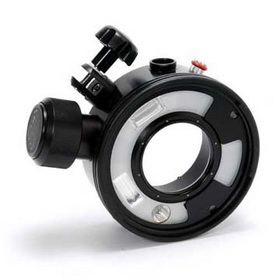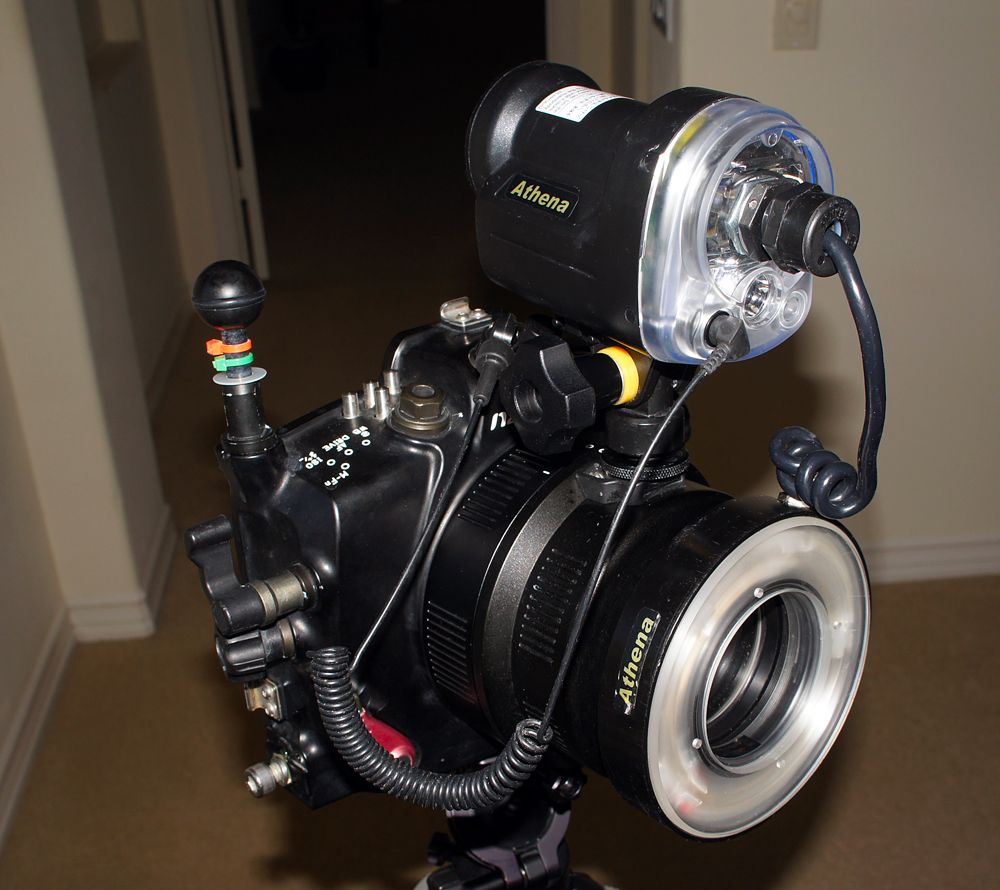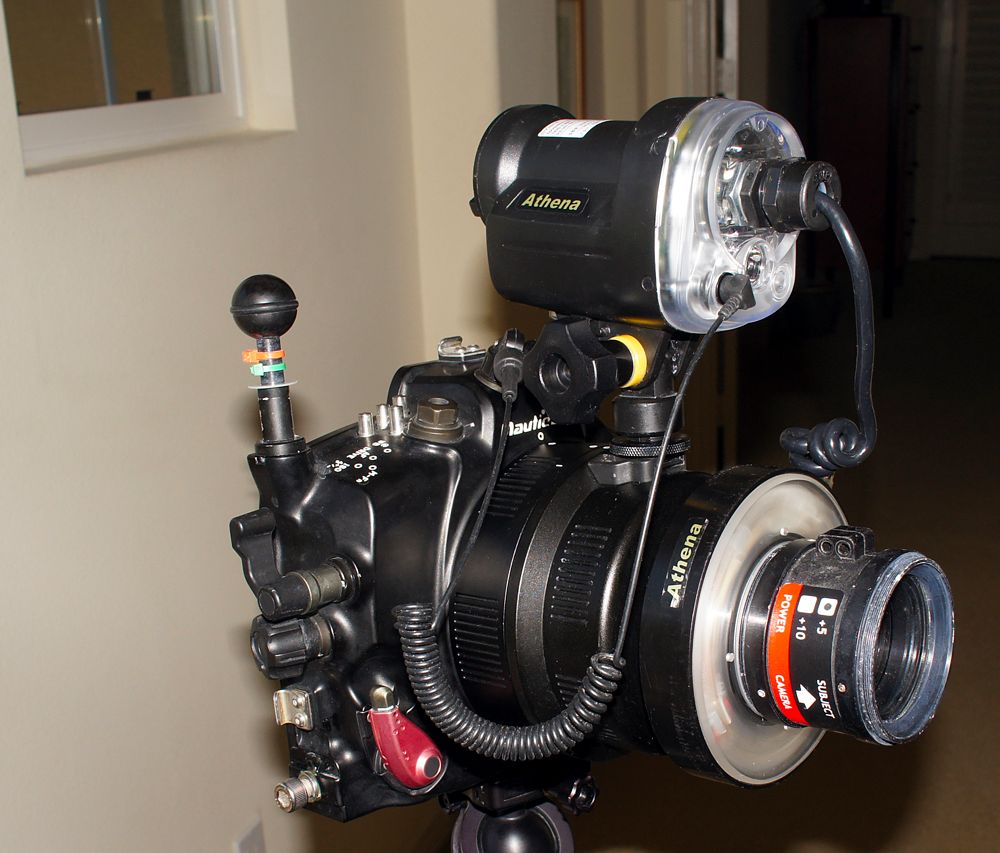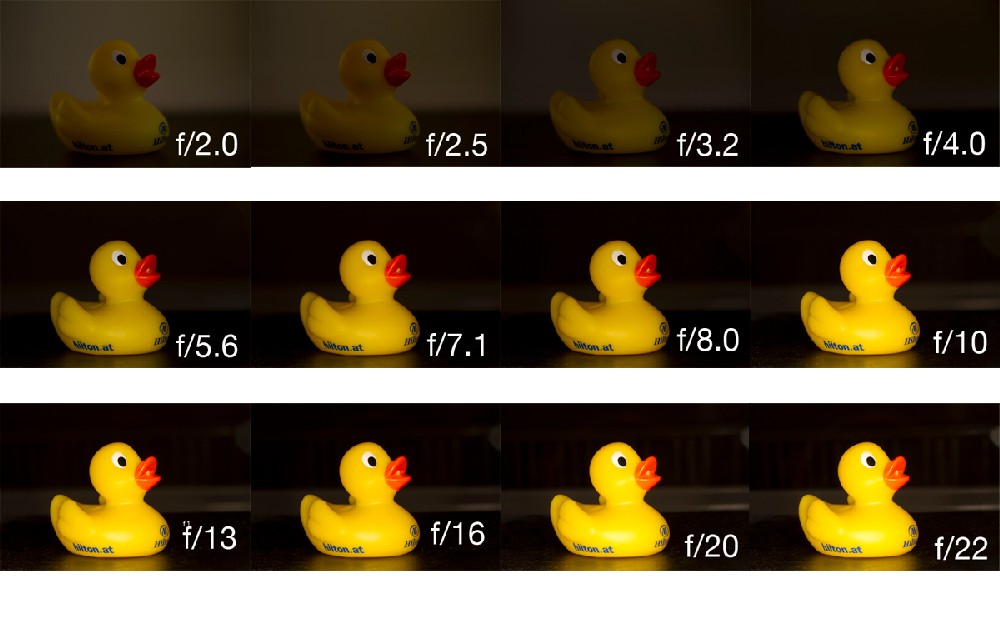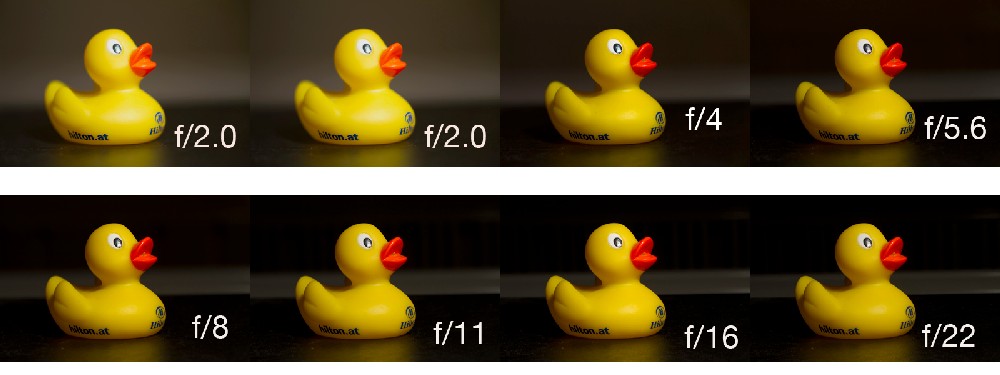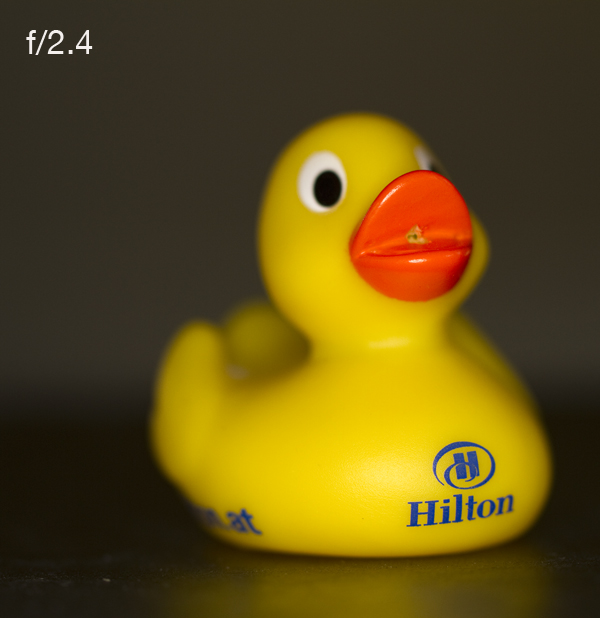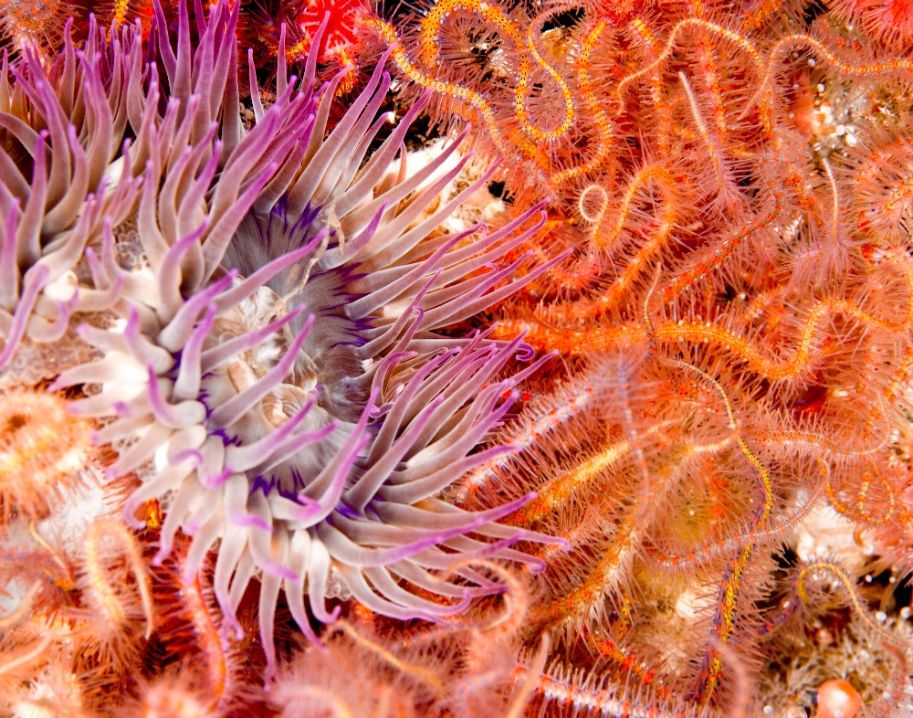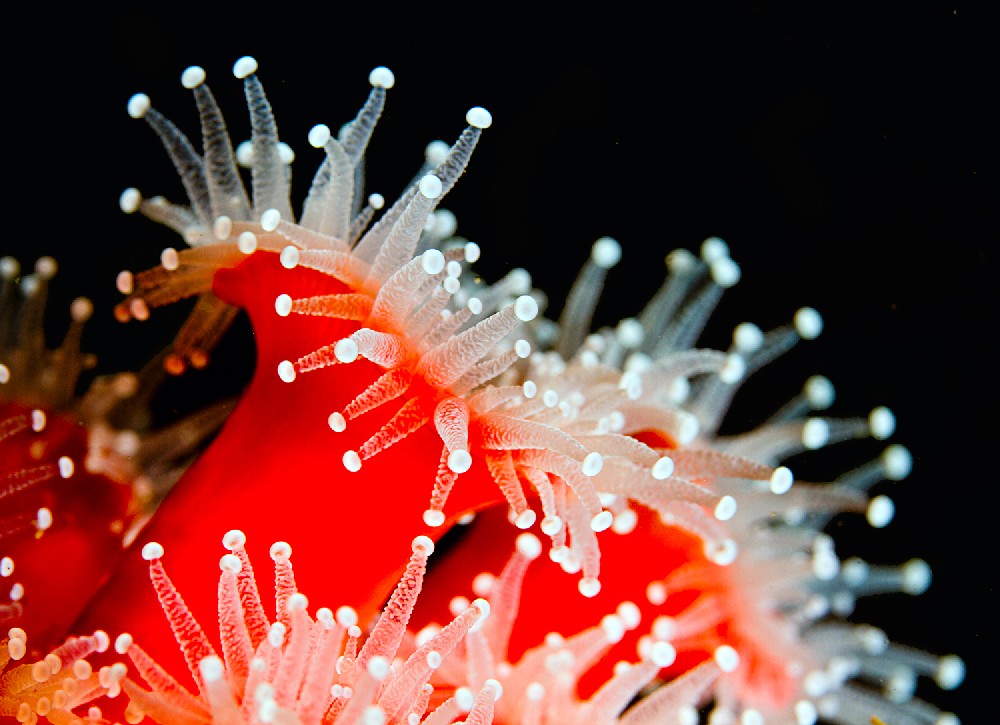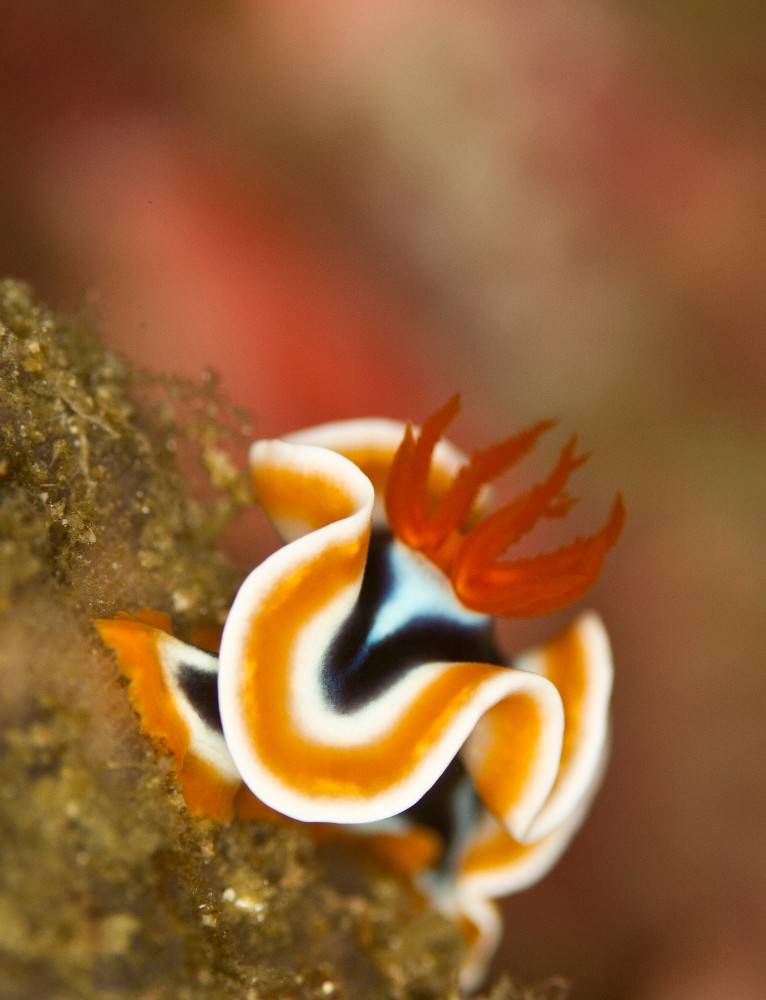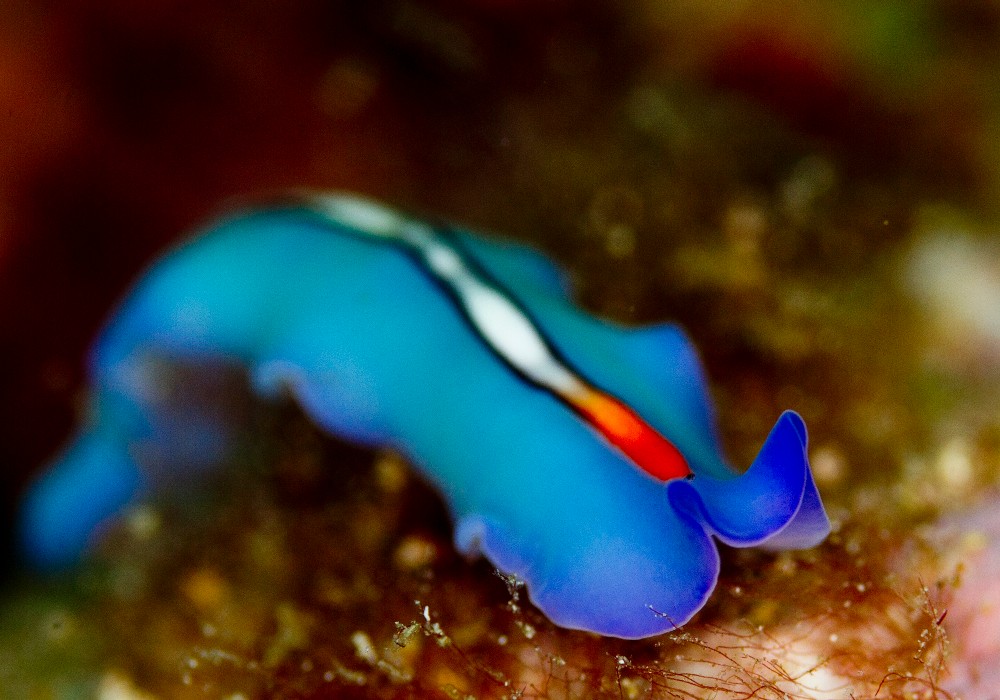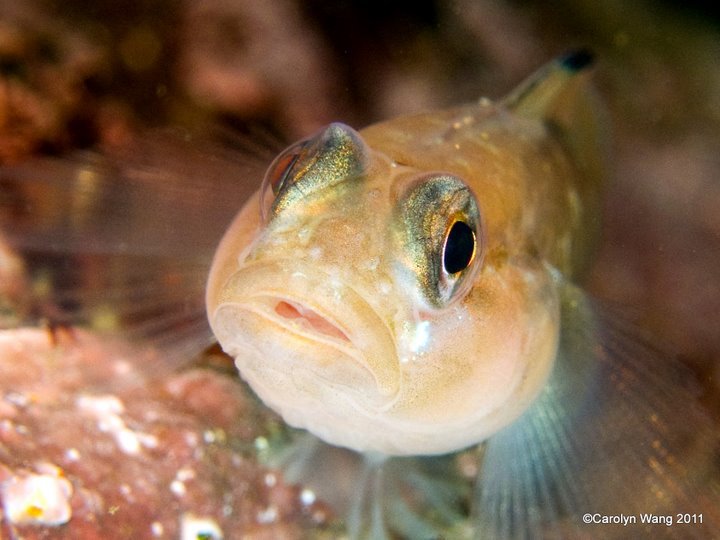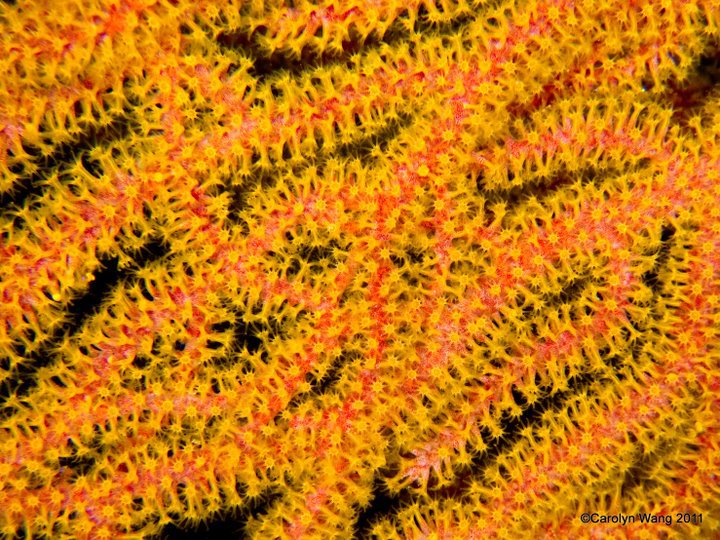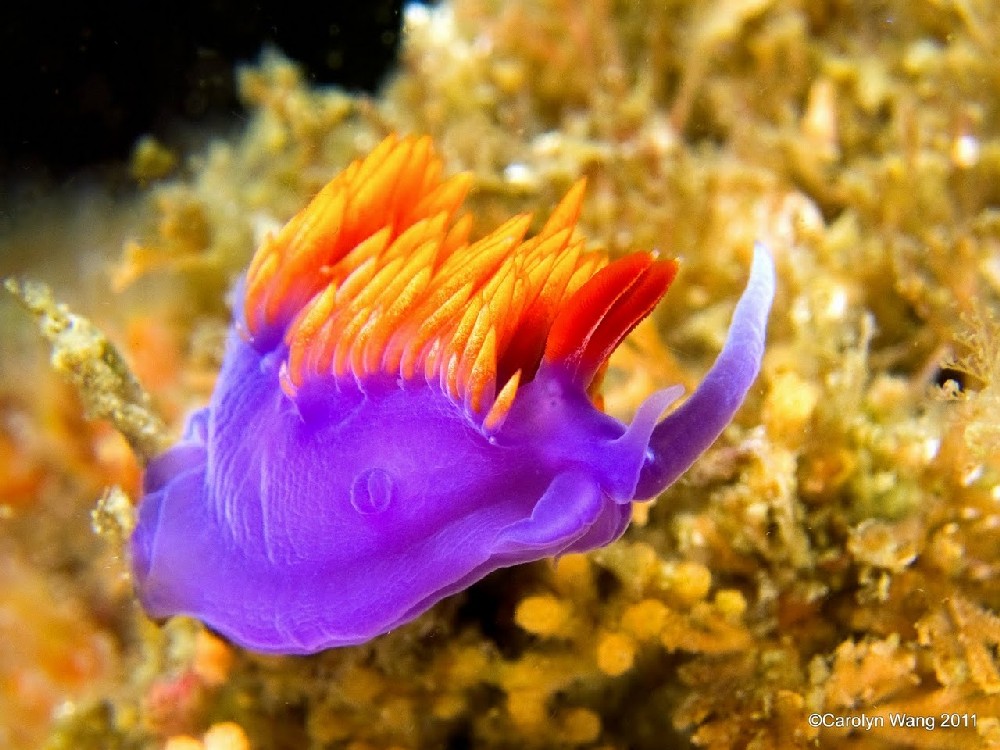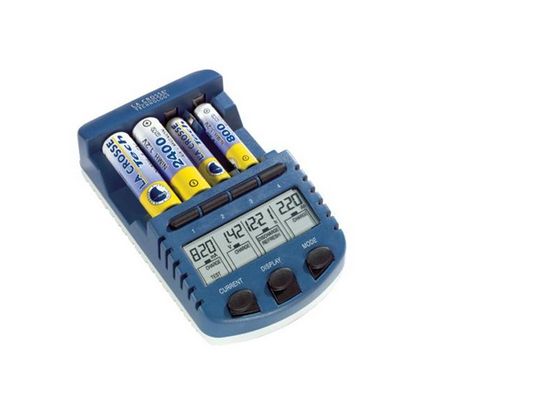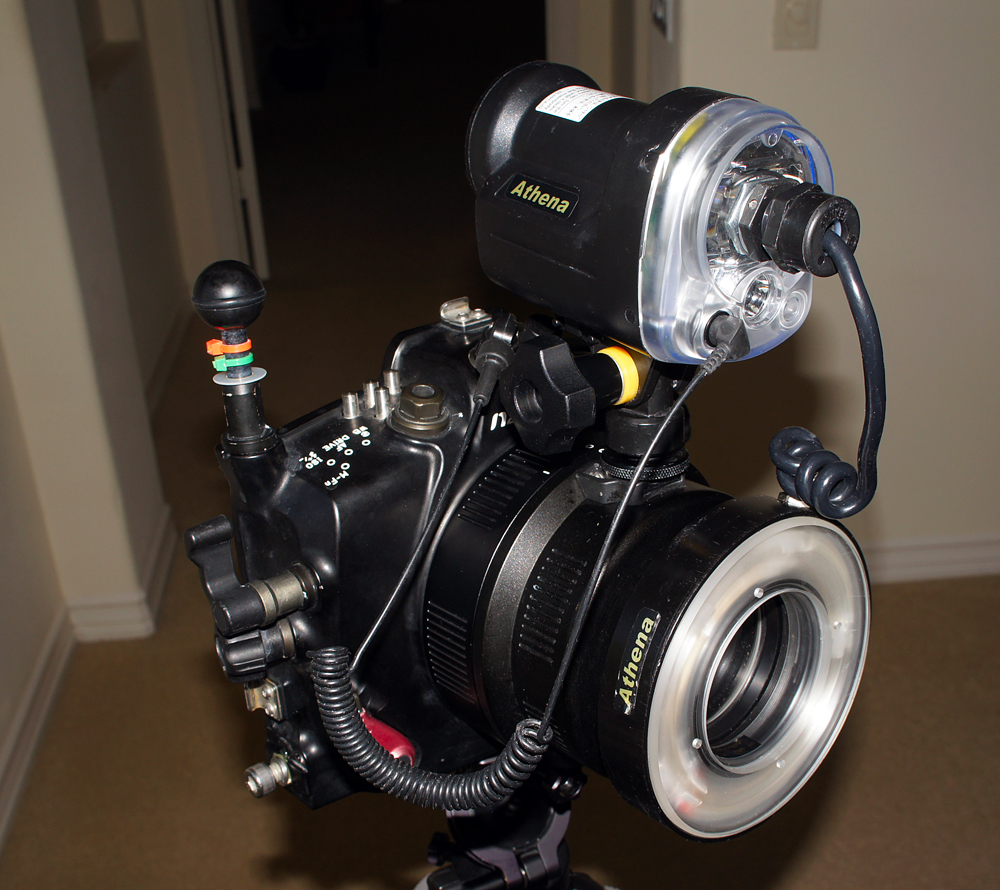
A ring-flash or ring-strobe can be quite useful underwater, and I will show you some examples. Whether you’re using a dSLR or compact camera set-up, the ring-flash can be a valuable addition to our underwater photography tool box. But first, some history.
Ring-flash background
Lester Dine invented the first ring-flash in 1952, and the eponymous company he founded still makes ring-flashes today. While ring-flashes were originally intended for dental photography, today they are a staple of the glamor photo business. In the studio, all of the major strobe companies now make ring-flashes for modeling work. The idea behind the ring-flash is that if you are shooting macro, you can get very interesting and even illumination if the light from the flash is both close to the lens and surrounds it along the long-axis of the lens. But what does that have to do with underwater photography?
Using ring-flashes underwater, like using snoots, is not a new endeavor. In the film days there were a group of British divers including Pete Ladell who had made a bunch of custom made ring-flashes. In 2001, Inon introduced the Z22 quad flash. It was intended for film cameras and had two power levels: permanently blind your subject and temporarily blind your subject. It is quite powerful, as it is meant for ISO 50 film and an aperture of F22. Unfortunately, Inon has stopped making the strobe, but if you can find one used, they are really nice strobes. They are powered by 4 AA batteries and you can easily get 300 flashes from a good set of batteries.
Inon Quad-Flash
Ring-flashes today
The only commercially produced ring-flash that I am aware of is the Athena ring-flash. Below is a picture of the Athena mounted on the front port of housing for the 7D. The Athena comes with a 67 mm threaded fitting so it can easily fit on any compact camera that has an adapter for a 67 mm threaded lens.
Athena Ring-Flash
The front of the Athena is threaded also so you can easily attach an add-on macro lens. Below I show the Athena with an added SubSee lens, but any 67 mm threaded lens will work such as those from Dyron or Inon.
Athena and SubSee
The technical stuff
If you look closely you will see that the Athena ring-flash is actually a Sea & Sea YS-01 flash system with the flash tubes removed. Athena modifies the YS-01 so that their proprietary flash tube connects to the innards of the YS-01. This means that the Athena has the same reliability and TTL capabilities as its parent YS-01 strobe. The Athena uses 4 AA batteries and with Eneloop brand batteries, I can get at least 400 flashes while using TTL mode. The strobe has a guide number of 16, which means it is about 1 stop less power than the YS-01 and a depth rating of 75 meters (245 feet). In any case this strobe is designed for macro use so in that respect it is powerful enough. The strobe has only a fiber optic connection; no electrical sync cords are necessary or even possible.
How well does the TTL work? Not terribly well. Below is a series of pictures shot with a Canon 7D in eTTL mode and the Athena.
Athena TTL
After F10 or so it works quite well but if you are trying to get some shallow depth of field (DOF) at large apertures, this is not the way to go. At first I was concerned that it was a camera issue, so I repeated the experiment with an Inon Z240 strobe and the results below show a lot more uniformity.
Inon TTL
Fortunately, you can run the strobe in manual mode and with a bit of playing you can get the following showing how DOF is related to aperture. Note the evenness of the light and the narrow DOF that you can get with this system.
Athena ring-flash with manual strobe power at F2.4
All of this is interesting but how does it work in the water? The first thing you notice when you dive with the Athena ring-flash without an external strobe is how much more streamlined your system is. This is particularly true for photographers shooting advanced point and shoot systems where the strobe arms are often 3 times as long as the entire housing. Secondly you realize that you don’t have to worry about how to set up your strobes. There is nothing to set and since the strobe is on the end of your port, the light goes where you aim the camera. This also means that you don’t have to worry about getting the strobes close to the subject, if you can focus on it, you can light it up.
Many people ask about backscatter because we have been taught since ‘underwater photography kindergarten’ that if your strobes are pointing along the axis of the lens you will get backscatter. We don’t observe an unusual amount of backscatter, most likely because we are typically shooting some critters from 3 to 8 inches away.
Below are some examples from California using only the Athena.
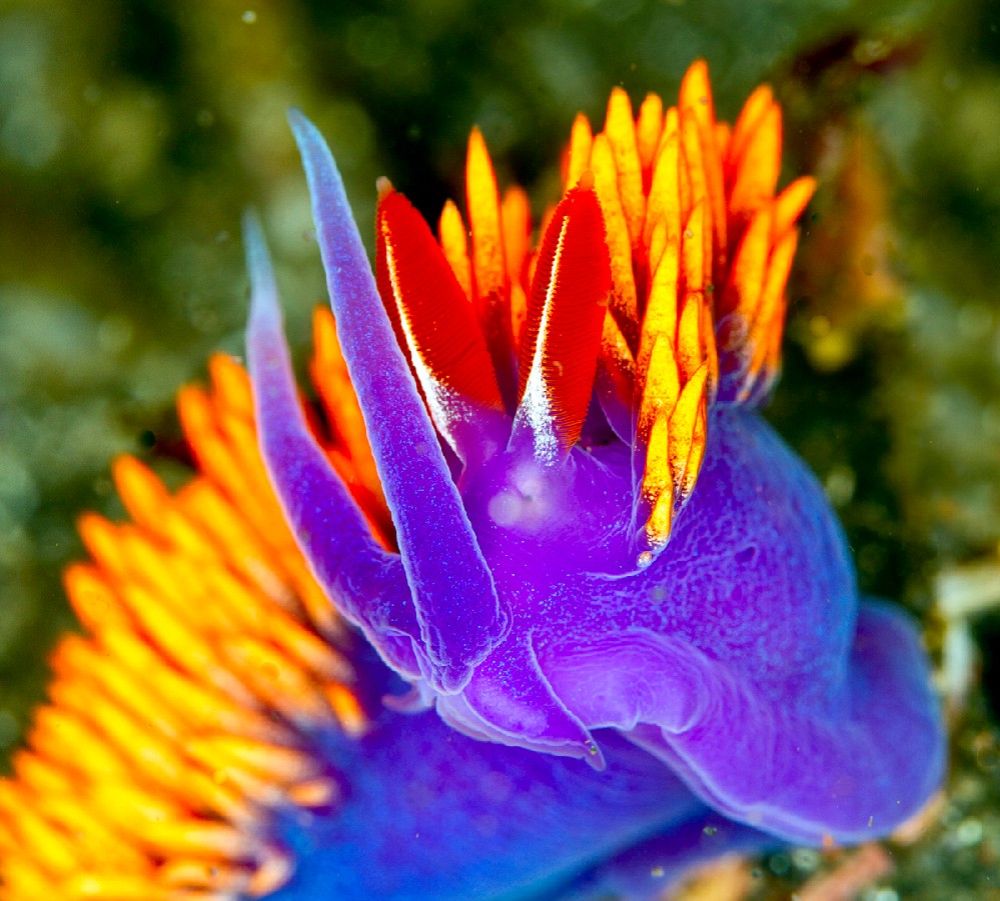
Anemone and brittle stars
Corynactis anemones
And some examples from Papua New Guinea
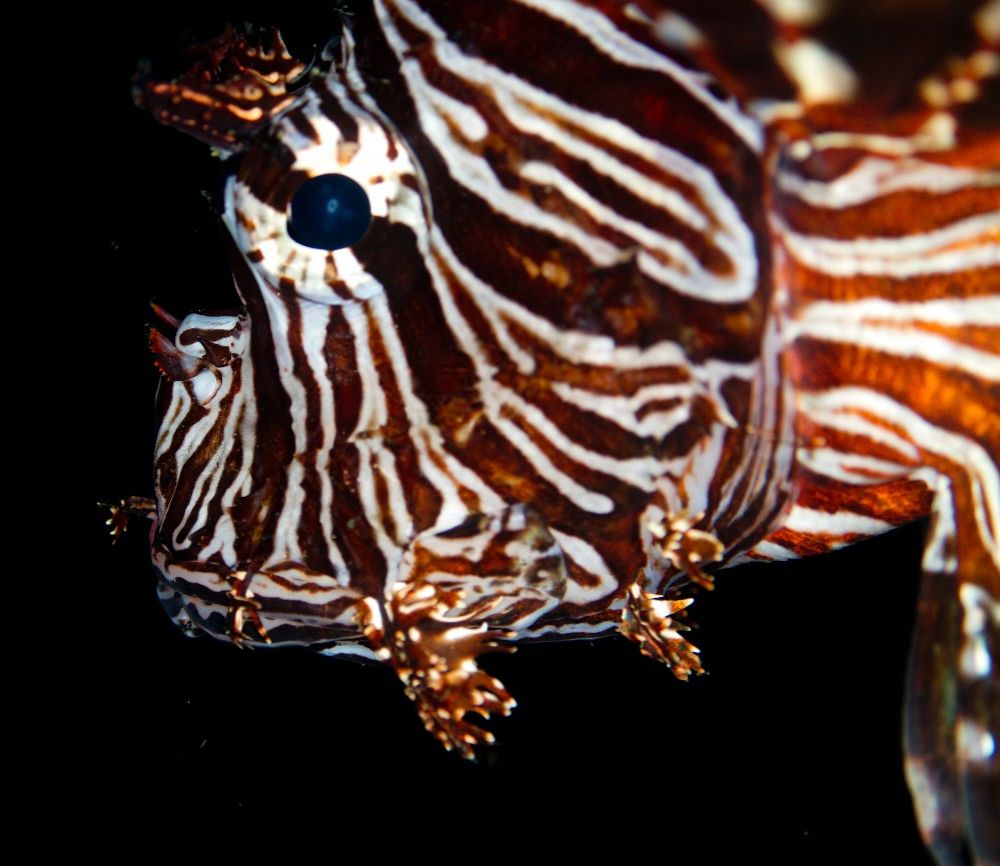
If you look at the Chromidoris crawling away from me you notice that you can get relatively pleasant bokeh using the ring-flash.
In this photo of a blue flatworm, you can see one of the drawbacks of the ring-flash which is that you can not always control the foreground lighting perfectly. I still think it is an OK shot that would have been tough to get with normal strobes since he was crawling between two rocks and the whole situation was kind of cramped.
Compact Camera pictures taken using the Athena Ring-Flash
Canon s90 in a FIX housing, 1 UCL-165 macro wet lens, Athena Ring-Flash. Photo by Carolyn Wang.
Canon s90 in a FIX housing, 1 Inon UCL-165 macro wet lens, Athena Ring-Flash. Photo by Carolyn Wang.
Canon s90 in a FIX housing, 1 Inon UCL-165 macro wet lens, Athena Ring-Flash, and 1 Inon s2000 strobe for side lighting. Photo by Carolyn Wang.
Carolyn adds:
Overall, I really like the ring-flash as it offers a different look for macro. I often dive with the ring flash and 1 additional strobe, so depending on the subject/location, I will use whatever lighting technique I think will look best.
One limitation I’ve found with my camera configuration (Canon s90, FIX housing) is that I can’t stack 2 UCL-165 macro wet lenses with the ring-flash. This is due to the very short subject-to-lens working distance. With the stacked lenses, the working distance so short that the ring-flash won’t light up the center of the frame, so you end up with a dark area right where the subject typically is. One UCL-165 macro wet lens still allows the subject to sit at an effective distance for the ring-flash. This may not be true of other camera configurations, but thought it was worth mentioning.
Ring-flashes are not the only strobe you should own of course, as they are quite useless for wide-angle photography, except maybe for some very close-focus wide-angle shots. Also they tend not to emphasize the shadows of a subject which can lead to a feeling of depth. My answer to that is to use the ring-flash for my main light and to use a small strobe like the YS-01 to add light from an extreme angle to lend depth to the pictures.
If you are just starting out, or have been shooting for many years, adding a ring-flash to your photographic arsenal can lead to some new ways of looking at the world under the waves.




